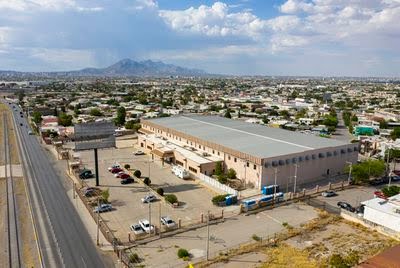
A surge of migrants arriving at the Texas-Mexico border has pushed the country’s immigration system to the breaking point as new policies aimed at both undocumented immigrants and legal asylum seekers have contributed to a humanitarian crisis. The Texas Tribune is maintaining its in-depth reporting on this national issue.
CIUDAD JUAREZ, Mexico — Asylum-seeking migrants who have been stuck in this border city for months have heard the same response from city and state officials: The shelters are full. We can’t help you.
But two separate initiatives announced earlier this week have human rights and immigrant advocacy groups hopeful that some of the thousands of asylum seekers waiting in this dangerous city will soon have a roof over their heads.
The Tribune’s reporting for this project is supported by the Pulitzer Center.
On Tuesday the Mexican government began converting a former factory into a shelter that could potentially house thousands of migrants, the El Paso Times first reported. Earlier in the week, the HOPE Border Institute, a faith-based community organization in the El Paso, Las Cruces and Ciudad Juárez area, launched the Border Refugee Assistance Fund to help migrants who are stranded south of the border.
More than 12,000 asylum seekers who are waiting for their court hearings in the United States have been sent to Ciudad Juárez after President Trump expanded the Migrant Protection Protocols to the border city in March. That doesn’t include more than 5,000 people waiting in Ciudad Juárez for the chance to cross the international bridges and apply for asylum in the United States, said Lic. Enrique Valenzuela, the director of Ciudad Juárez’s Centro de Atención a Migrantes, a migrant transition facility operated by the Chihuahua state government.
(snip)
“This is a situation where we’ve played our part [and] we’ve asked for help since February,” Valenzuela said. He said he was told the new shelter would initially house up to 1,200 migrants; the El Paso Times reported the total capacity will be about 3,000. It opened on Thursday, the Times reported on Twitter.
This isn’t the first time Mexican officials have used an empty factory to house migrants. In February roughly 1,600 Central Americans who had formed a caravan to reach the border were taken to a former factory in Piedras Negras, which sits across the Rio Grande from Eagle Pass. Tensions rose as some migrants complained that Mexican officials would not allow them to leave and didn’t provide promised work visas.
But officials on both sides of the border said the facility served its purpose: to provide a safe place for migrants and avoid the chaos seen in Tijuana late last year when American officials used tear gas to stop a group of migrants from rushing across the border.
Meanwhile, several faith-based organizations in El Paso have closed shelters previously set up at churches months ago as federal immigration officials released thousands of migrants into the city during a surge of asylum seekers arriving at the border. The Migrant Protection Protocols program, which forces asylum seekers to wait in Mexico until a U.S. judge can hear their case, appears to have reduced that surge, as has Mexico’s own ramped-up enforcement on its southern border.
The Annunciation House, which runs a network of El Paso shelters, spent nearly $1 million to rent hotel space when the release of migrants into the El Paso area spiked. They haven’t needed to rent hotel rooms recently, said Ruben Garcia, the shelter’s director, but he’s seen a recent jump in the number of migrants being released in El Paso.
“The last couple of weeks we’ve received 75 to 150 people a day, and now it’s maybe double that so the numbers have gone up,” he said. “But we’re still able to accommodate them [within existing shelters].”
Garcia said he fears that because of the combined efforts of the U.S. and Mexican governments to stop migrants from claiming asylum, more of them will try to cross the border illegally in remote areas like Antelope Well, N.M., which is in the Border Patrol’s El Paso sector.
“People are leaving a safer crossing point in the El Paso area and they are traveling out to [New Mexico] in this heat,” he said. “I think that’s really dangerous for people to do.”
Marisa Limón, deputy director of HOPE Border Institute, said her group is focusing its efforts on the Mexican side of the border.
“We’re seeing the same people are still in need, they’re just south of the border. So [Bishop Mark J. Seitz] felt compelled to step up and offer some kind of support,” she said. “Almost every day we get calls and emails from people locally, but also across the country, asking how can we help and what can we do.”
The organization plans to build on $10,000 of seed money to help shelters in Ciudad Juárez feed, clothe and shelter the migrants. Limón said the Catholic Diocese of El Paso will take the lead in processing requests for assistance.
That’s welcome news for people like Valenzuela who have become increasingly worried about how Mexicans are treating the migrants, most of whom are from Central America or Cuba. As he spoke to a reporter on Wednesday, he pointed out a Cuban man who was assaulted that same morning on his way to work simply because he’s a migrant.
Last month, a Honduran man recounted how he was assaulted on the outskirts of town because he was from Central America; another Honduran said he was afraid to leave the house where a local couple was sheltering a group of migrants.
“We’re worried that this type of local tension will only increase,” Valenzuela said.
*see full story by The Texas Tribune